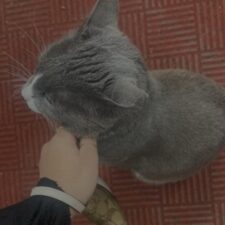You must be logged in to reply to this topic.
- Feb. 2, 2024 classwork for today
-
August 30, 2022 at 8:56 am #91836

Prof. MasielloParticipantAll of this page should be done be fore our next class meeting, Feb. 6. It is classwork, not homework.
We will start with some punctuation marks that confuse many students.Here is a link to three of them:
https://writingcenter.unc.edu/tips-and-tools/semi-colons-colons-and-dashes/A) Please open it, read it, and write down any questions that come to mind.
B) What is the difference between dashes (–) and hyphens (-)? Explain with an example that you find or create.
Be aware that you can often Google information you need. Some students wrote they are uncertain about other marks.C) Google the ones you need and copy, paste, and save what you learn. This is for you, not to post in Discussion. Start keeping a folder of links you can use or print them out and put them into a folder or binder.
Remember that a sentence of any type must be complete. If it is incomplete, it is called a “sentence fragment,” which is incorrect in writing.
D) Sometimes a single word can be a complete sentence. Write down one-word sentences.
They all will have something in common, they are verbs.
E) When you write down a request like Stop. Go. Run. why do we not add “You” in front of the verb? If you are fluent in another language, does the same rule apply? Is the equivalent word for “you” in the other language used or not in a command or request? Why do you think that is?
F) What is the difference between a simple sentence and a compound sentence?
G) Please create five original compound sentences. Look for examples.
Make sure to post your original sentences here in Discussion.-
This topic was modified 6 months, 1 week ago by
 Prof. Masiello.
Prof. Masiello.
February 5, 2024 at 2:08 pm #92357
tanyaParticipantB)The difference between dashes(–) and hyphens (-) is that dashes are longer and used for separating phrases or giving emphasis to a sentence. While hyphens are used for prefixes conjoining two words together.
D) Run. Jump. Sleep. Think. Listen. Speak. Look.
E) We don’t add “you” in front of one word sentence verbs because it isn’t necessary. If you’re using a verb in a one word sentence since it is an action it is already directed towards the person you are speaking to. So there is no need to add “you” unless you’re forming a complete sentence. In Arabic, we have the same rule where it isn’t necessary to say “you” before every command or request.
F) A simple sentence is a sentence with one phrase that contains one subject and verb. A compound sentence uses a comma to combine two phrases that could be sentences of their own. It contains more than one subject or verb and usually incorporates conjugations.
G) 1.I was tired, so I went to sleep. 2.I wasn’t hungry, but the food looked good so I ate. 3.My brother is annoying, and he knows it as well. 4.I have a cat, but my brother is allergic. 5.I love rice and chicken, but I also love pasta.February 5, 2024 at 2:47 pm #92366
OsmanParticipantB) Dashes (–) connect words or parts, while hyphens (-) signal a break in a sentence. For example, “high-tech” uses a hyphen, and dashes create breaks in sentences like “The forest — dense and mysterious — seemed endless.”
D) One-word sentences, like “Stop. Go. Run.,sleep,jump,speak” are commands where “You” is implied.
E) In commands like “Stop. Go. Run.,” the subject “You” is usually omitted for brevity and clarity, consistent across languages.When you tell someone to do something like “Stop. Go. Run.,” you often skip saying “You” before the action. This is because it’s already understood that the instruction is for the person you’re talking to. Adding “You” would be like saying the obvious and might not sound right. So, leaving it out keeps things clear and simple.
F) Simple sentences have one clause; compound sentences join clauses with coordinating conjunctions.
G) Five compound sentences:
1. The sun set, and stars twinkled.
2. She studied hard but felt anxious.
3. The cat napped, then perked up at the can opener.
4. They hiked after packing.
5. Rain poured, but children played in puddles.-
This reply was modified 6 months ago by
 Osman.
Osman.
February 5, 2024 at 9:33 pm #92391
ibrahimParticipantB) Dashes (–) are used to indicate a pause or break in a sentence, often for emphasis or to set off additional information. Hyphens (-) are used to join words together or to separate syllables in a word. Example: Dashes: She finally reached her goal – the summit of the mountain. Hyphens: It was a well-known fact that she was a hard-working student.
D) One word sentences: Stop. Go. Run. Jump. Stay.
E) In commands or requests, we don’t add “You” in front of the verb because it’s implied and understood. This applies similarly in other languages where the equivalent word for “you” may not be used in commands or requests, as the context already implies the subject.
F) A simple sentence contains only one independent clause, whereas a compound sentence contains two or more independent clauses joined by coordinating conjunctions or semicolons.
G) Five compound sentences: 1. She wanted to go for a walk, but the weather was too cold. 2. He studied hard for the exam, so he was confident about passing it. 3. The dog barked loudly, yet the cat remained unfazed. 4. They went to the beach, and they enjoyed swimming in the ocean. 5. I wanted to travel abroad this summer; however, I couldn’t due to budget constraints.
February 6, 2024 at 2:05 am #92394
Ahasan AliParticipantB) Hyphens (-) are like short lines that stick words together, such as in “high-quality” or “well-known.” They join words or parts of words, like buddies.Dashes (–), The dash creates a kind of interruption to share something important. For example, “The weather—hot and humid—made it hard to enjoy the outdoor event.” The dash creates a kind of interruption to share something important.
D) One-word sentences that can convey meaning or emotion. Here are some examples: Yes, Go, No, Wait, and Okay.E) When we write commands like “Stop,” “Go,” or “Run,” we don’t usually add “You” before the verb. This is because these are imperative sentences, where we tell someone to do something. Including “You” would make it more formal and less direct. So, we leave it out to make the command stronger and to the point. It’s like saying, “Do it now!” instead of “You, do it now!”.In Spanish: “¡Corre!” (Run!). The subject pronoun “tú” (you) is often omitted in commands because it’s understood from the verb conjugation and the context. Including “tú” would make the command sound more formal. The reason for omitting the subject pronoun in commands or requests across languages is likely used for efficiency and directness. By omitting unnecessary words, the command becomes more impactful.
F) A simple sentence is like a basic thought because it has just one subject and one action. For example, “She loves to read. A compound sentence is like when you put two simple sentences together using words like “and,” “but,” or “or.” For instance, “She loves to read, but he prefers watching movies.”
G) Five original compound sentences:- She enjoys hiking in the mountains, but her brother prefers swimming at the beach.
- The dog barked loudly, and the cat ran away in fear.
- I wanted to go to the party, yet I had to study for my exam.
- He ordered a pizza for dinner, and she made a salad to go with it.
- The sun was shining brightly, so we decided to have a picnic in the park.
-
This reply was modified 6 months ago by
 Ahasan Ali.
Ahasan Ali.
February 6, 2024 at 8:06 am #92396
Juan BParticipantB.) The difference between dashes and hyphens is that hyphens are typically used to combine words together to make compound words, an example of this is the word high-speed. On the other hand, dashes are used to set off or emphasize information within a sentence, an example of this is the sentence “The new Taylor Swift concert—a spectacular event—was sold out”.
D.) Stop. Wait. Yes. No. Sorry. Please
E.) In commands / requests, we don’t usually add “You” in front of the verb because it is obvious who the command is directed towards. In Spanish, we have the same rule where it isn’t required to add “You” before every command / request. I think this is true across different languages since it improves the efficiency of saying those commands / requests.
F.) The difference between a simple sentence and a compound sentence is that a simple sentence contains one clause, while compound sentences usually contain more than one clause with the use of conjunctions.
G.) Sarah enjoys reading, but her brother prefers to play video games. The sun was shining brightly, yet the air was chilly with a hint of winter’s approach. They had planned a picnic in the park, yet unexpected rain forced them to stay back home. The cat curled up by the fireplace, and the dog laid down on the rug. He worked hard all day, so he treated himself to a relaxing bath after arriving home from work.February 6, 2024 at 8:58 am #92400
Gana ElhanafyParticipantA) If you want to quote something and the first word already uses quotations, do you skip writing the first quotation?
B) The difference between dashes and Hyphens is that Hyphens are shorter lines (-) and they are most often used to show connections between words that are working as a unit such as “two-thirds”. Meanwhile dashes can be used to emphasize material in a sentence, for example, “The barber gave me a terrible haircut– and he expected a tip.” You can even use two dashes to emphasize material in the middle of a sentence, like in the sentence; “Everything I saw in my new neighborhood—from the graceful elm trees to the stately brick buildings—reminded me of my alma mater.”
D) Stop. Drop. Roll. Run. Speak. Listen.
E) When we use verbs like “Stop. Drop. Roll. Run. Speak. Listen.”, the word “You” is already accounted for as it is implied and easily understood since we know the command is directed at someone. Adding “you” in front would make the sentence sound unnatural.
F) A simple sentence is a sentence that consists of just one independent clause while a compound sentence has at least two independent clauses.
G) I like vanilla ice cream and I like chocolate ice cream.
He was eating and he was talking with his friends.
It was raining, so we couldn’t go out that day.
He likes dark blue, however, he doesn’t like the color baby blue.
The friends like reading comic books and they enjoy reading novels as well.
-
This reply was modified 6 months ago by
 Gana Elhanafy.
Gana Elhanafy.
February 6, 2024 at 10:05 am #92404
Rafael RochaParticipantB:Hyphens are usually used to join words together while dashes might indicate a change in thought in a sentence or various other reasons. EX: The Twenty-Five-Year-Old car was still running smoothly. EX2: The meeting is schedule Monday-Friday.
D: Stop,Go,Yes,No, Maybe
F:A simple sentence is a sentence that consists of just one independent clause while a compound sentence contains 2 independent clauses.
G: 1: She went to the store, and bought some groceries
2:The sun was shining brightly, so we decided to go for a walk in the park
3:I finished my Homework early, but I still couldn’t find my book
4: He likes to play Basketball, but prefers to play Soccer
5:She wanted to travel to Europe this Summer, however she couldn’t get time off from work
-
This reply was modified 6 months ago by
 Rafael Rocha.
Rafael Rocha.
February 6, 2024 at 5:42 pm #92426
braulioParticipant<span style=”font-family: ‘Open Sans’, Helvetica, Arial, sans-serif; font-size: 14px;”>B. Difference between dashes and hyphens is that dashes and used for separating phrases. While hyphens are used to combine two words together.</span>
D. Who?
E. When you tell someone to “Stop Go or Run ” you don’t say you because its understood that the instruction is for the person your talking to.
F. a simple sentence has 1 independent clause and a compound sentence has 2 independent clause
G
- I did not cheat on the test, for it was the wrong thing to do.
- I really need to go to weak, but I am to sick to drive.
- I am counting my calories, yet I really want dessert.
- he ran out of money, so he had to stop playing poker
- we got here early, and we got really good seats
February 6, 2024 at 6:07 pm #92427
Mariadelmar MarinParticipantB) The difference between dashes and hyphens are as follow…
Dashes (longer) separates words into parenthetical statements (usage between phrases or groups of words).
*Dash (–) example: My hairstylist dyed my hair –but she burned my scalp!
Hyphens (Shorter) joints two or more words together.
Example: Hyphen (-): The two-hour class is almost over.
D) One word sentences are: Run, Eat, Dance, Cook, Listen, and Talk.
E) In a sentence the word “You” pronoun is unnecessary since it’s understood that you are the subject, since you’re speaking directly to the person. I believe “You” can be use before a verb if you’re asking a question. Same thing goes in Spanish, We don’t use “You” since its clearly known they are the subject.
F) Simple sentences only has oner verb.
ex: The prisoner escaped.
Compound sentences are made from two independent sentences joined by “and”, “or”, or “but”.
they are used to connect sentences.
G) 1) I don’t drink greet tea but, they drink coffee.
*I don’t drink tea-this clause could stand alone as a sentence.
*they drink coffee-this clause could stand alone as a sentence.
*But-is the joining method making it a compound sentence.
2) I chose black pants but, a white shirt.
3) I going to buy a pair of shoes and socks.
4) I didn’t know this assignment was classwork but, submitted it late anyways.
5) She clearly said potato chips or apples.
Mariadelmar Marin
-
This reply was modified 6 months ago by
 Mariadelmar Marin.
Mariadelmar Marin.
February 6, 2024 at 7:07 pm #92431
Yaritza TorresParticipantB: The difference between dashes (–) and hyphens (-) is that dashes are longer than hyphens and are used to emphasize information. For example, when her father arrived—a half-hour later than expected—Liza’s party began. Hyphens are used to show connections between words that serve as an integrated whole. For example, father-in-law, mother-in-law, sister-in-law.
D: A single-word sentence is a single word that forms a full sentence. For example, no, yes, good, stop.
E: We don’t use “you” in front of stop, go, and run in a single-word sentence because they are verbs. We already understand what they are saying because it’s an action.
F: A simple sentence contains one independent clause while a compound sentence has two independent clauses.
G: 1. You have to eat your food, or you won’t get cake. 2. He has no money, so he got a job. 3. I’m trying to lose weight, but I keep eating junk food. 4. Do you want to go by yourself, or do you want me to in with you? 5. I’m allergic to cats, yet I still pet them.
-
This reply was modified 6 months ago by
 Yaritza Torres.
Yaritza Torres.
February 6, 2024 at 10:59 pm #92433
Sofia QuindeParticipantB) The difference between dashes (–) and hyphens (-) is that dashes are longer than hyphens, and dashes are used in sentences to emphasize and add drama to information. Hyphens are used to joint words together.
Dash example: Sarah recalled the way he smelt– wintery cologne.
Hyphen example: Tom is turning Fifty-five today.
D) One-word sentences can use the words stop, no, yes, and good.
E) When you write down a request like Stop. Go. Run. why do we not add “You” in front of the verb? The reason we do not put the word “You” in front of the verb is because the other person comprehends what they are saying. After all, it’s either a command, action, instruction, or request.
F) A simple sentence includes only one independent clause and no dependent clause whilst a compound sentence has two or more dependent clauses.
G)
1. Charlie was quiet in school, but loud at home.
2. She did not want to go to school, but then again realized school was very important.
3. Dolly finished class, so she then went to lunch.
4. Thomas wanted pancakes for breakfast, but Sarah already made scrambled eggs.
5. Sarah could sing well, but she does not dance.
-
This reply was modified 6 months ago by
 Sofia Quinde.
Sofia Quinde.
February 7, 2024 at 6:15 pm #92479
arslanParticipant<p dir=”ltr” style=”line-height: 1.38; margin-top: 0pt; margin-bottom: 0pt;”><span style=”font-size: 11pt; font-family: Arial,sans-serif; color: #000000; background-color: transparent; font-weight: 400; font-style: normal; font-variant: normal; text-decoration: none; vertical-align: baseline; white-space: pre-wrap;”>B) Hyphens are typically used to join words together or to indicate a word break at the end of a line. They are commonly used in compound words, such as “well-known” or “self-confidence.” Hyphens also have grammatical purposes, such as forming certain verb forms like “e-mail” or joining prefixes with proper nouns like “pre-Renaissance.”</span></p>
<p dir=”ltr”></p>
<p dir=”ltr” style=”line-height: 1.38; margin-top: 0pt; margin-bottom: 0pt;”><span style=”font-size: 11pt; font-family: Arial,sans-serif; color: #000000; background-color: transparent; font-weight: 400; font-style: normal; font-variant: normal; text-decoration: none; vertical-align: baseline; white-space: pre-wrap;”>On the other hand, dashes, specifically en dashes (–) and em dashes (—), serve different purposes in writing. An en dash is longer than a hyphen but shorter than an em dash. It is primarily used to indicate ranges or connections between two elements.</span></p>
<b style=”font-weight: normal;”></b>
<p dir=”ltr” style=”line-height: 1.38; margin-top: 0pt; margin-bottom: 0pt;”><span style=”font-size: 11pt; font-family: Arial,sans-serif; color: #000000; background-color: transparent; font-weight: 400; font-style: normal; font-variant: normal; text-decoration: none; vertical-align: baseline; white-space: pre-wrap;”>D) Maybe.</span></p>
<p dir=”ltr” style=”line-height: 1.38; margin-top: 0pt; margin-bottom: 0pt;”><span style=”font-size: 11pt; font-family: Arial,sans-serif; color: #000000; background-color: transparent; font-weight: 400; font-style: normal; font-variant: normal; text-decoration: none; vertical-align: baseline; white-space: pre-wrap;”> Help!</span></p>
<p dir=”ltr” style=”line-height: 1.38; margin-top: 0pt; margin-bottom: 0pt;”><span style=”font-size: 11pt; font-family: Arial,sans-serif; color: #000000; background-color: transparent; font-weight: 400; font-style: normal; font-variant: normal; text-decoration: none; vertical-align: baseline; white-space: pre-wrap;”>Go.</span></p>
<p dir=”ltr” style=”line-height: 1.38; margin-top: 0pt; margin-bottom: 0pt;”><span style=”font-size: 11pt; font-family: Arial,sans-serif; color: #000000; background-color: transparent; font-weight: 400; font-style: normal; font-variant: normal; text-decoration: none; vertical-align: baseline; white-space: pre-wrap;”> Wait.</span></p>
<p dir=”ltr” style=”line-height: 1.38; margin-top: 0pt; margin-bottom: 0pt;”><span style=”font-size: 11pt; font-family: Arial,sans-serif; color: #000000; background-color: transparent; font-weight: 400; font-style: normal; font-variant: normal; text-decoration: none; vertical-align: baseline; white-space: pre-wrap;”>Love.</span></p>
<p dir=”ltr” style=”line-height: 1.38; margin-top: 0pt; margin-bottom: 0pt;”><span style=”font-size: 11pt; font-family: Arial,sans-serif; color: #000000; background-color: transparent; font-weight: 400; font-style: normal; font-variant: normal; text-decoration: none; vertical-align: baseline; white-space: pre-wrap;”> Sorry.</span></p>
<b style=”font-weight: normal;”> </b>
<p dir=”ltr” style=”line-height: 1.38; margin-top: 0pt; margin-bottom: 0pt;”><span style=”font-size: 11pt; font-family: Arial,sans-serif; color: #000000; background-color: transparent; font-weight: 400; font-style: normal; font-variant: normal; text-decoration: none; vertical-align: baseline; white-space: pre-wrap;”>E ) When you write “Stop. Go. Run.” as a request, don’t use the word “You” before each verb because this type of sentence is called imperative in English grammar. Imperatives are used to give clear commands without mentioning who has to do it explicitly.</span></p>
<p dir=”ltr” style=”line-height: 1.38; margin-top: 0pt; margin-bottom: 0pt;”><span style=”font-size: 11pt; font-family: Arial,sans-serif; color: #000000; background-color: transparent; font-weight: 400; font-style: normal; font-variant: normal; text-decoration: none; vertical-align: baseline; white-space: pre-wrap;”>Native speakers often leave out the word “You” in their commands. This makes them shorter and easier to understand. Using “You” would just repeat what we already know, so it’s not needed.</span></p>
<b style=”font-weight: normal;”> </b>
<p dir=”ltr” style=”line-height: 1.38; margin-top: 0pt; margin-bottom: 0pt;”><span style=”font-size: 11pt; font-family: Arial,sans-serif; color: #000000; background-color: transparent; font-weight: 400; font-style: normal; font-variant: normal; text-decoration: none; vertical-align: baseline; white-space: pre-wrap;”>F) A simple sentence is a type of sentence that has only one idea. It includes a subject and verb, and can be its own complete thought. A compound sentence has two or more independent clauses that are joined by coordinating conjunctions like “and,” “but” or “or.” Each clause can be a complete sentence on its own.</span></p>
<b style=”font-weight: normal;”></b>
<p dir=”ltr” style=”line-height: 1.38; margin-top: 0pt; margin-bottom: 0pt;”><span style=”font-size: 11pt; font-family: Arial,sans-serif; color: #000000; background-color: transparent; font-weight: 400; font-style: normal; font-variant: normal; text-decoration: none; vertical-align: baseline; white-space: pre-wrap;”>g) 1. The sun was shining brightly, and the birds were singing cheerfully in the trees.</span></p>
<p dir=”ltr” style=”line-height: 1.38; margin-top: 0pt; margin-bottom: 0pt;”><span style=”font-size: 11pt; font-family: Arial,sans-serif; color: #000000; background-color: transparent; font-weight: 400; font-style: normal; font-variant: normal; text-decoration: none; vertical-align: baseline; white-space: pre-wrap;”>2. I had a long day at work, so I decided to relax on the couch and watch a movie.</span></p>
<p dir=”ltr” style=”line-height: 1.38; margin-top: 0pt; margin-bottom: 0pt;”><span style=”font-size: 11pt; font-family: Arial,sans-serif; color: #000000; background-color: transparent; font-weight: 400; font-style: normal; font-variant: normal; text-decoration: none; vertical-align: baseline; white-space: pre-wrap;”>3. She wore a beautiful red dress to the party, and everyone complimented her on how stunning she looked.</span></p>
<p dir=”ltr” style=”line-height: 1.38; margin-top: 0pt; margin-bottom: 0pt;”><span style=”font-size: 11pt; font-family: Arial,sans-serif; color: #000000; background-color: transparent; font-weight: 400; font-style: normal; font-variant: normal; text-decoration: none; vertical-align: baseline; white-space: pre-wrap;”>4. The smell of freshly baked cookies filled the kitchen, enticing everyone to indulge in a sweet treat.</span></p>
<p dir=”ltr” style=”line-height: 1.38; margin-top: 0pt; margin-bottom: 0pt;”><span style=”font-size: 11pt; font-family: Arial,sans-serif; color: #000000; background-color: transparent; font-weight: 400; font-style: normal; font-variant: normal; text-decoration: none; vertical-align: baseline; white-space: pre-wrap;”>5. He studied diligently for his exams, but he still felt nervous about how well he would perform.</span></p>
<span style=”font-size: 11pt; font-family: Arial,sans-serif; color: #000000; background-color: transparent; font-weight: 400; font-style: normal; font-variant: normal; text-decoration: none; vertical-align: baseline; white-space: pre-wrap;”> </span>February 12, 2024 at 5:04 pm #92647
arslanParticipantB)
A hyphen is a shorter mark (-) that is primarily used to join words or parts of words together. It is commonly used in compound words such as “mother-in-law” or “well-being.” Hyphens can also be used to break words at the end of a line when word wrapping occurs.On the other hand, dashes come in two forms: en dash (–) and em dash (—). The en dash is slightly longer than a hyphen but shorter than an em dash. One common use of the en dash is to represent ranges, such as dates or numbers. For example:
– “The event will take place on 10–15 June.”
D)
1. Stop.
2. Go.
3. Help.
4. Yes.
5. No.
6. Maybe.
7. Okay.
8. Why?
9. Wow!
10. Fine.E) When writing down a request like “Stop. Go. Run.”, we do not typically add “You” in front of the verb because it is implied. In English, commands or requests often omit the subject pronoun “You” as it is understood that the instruction is directed towards the person being spoken to.
This rule varies across languages, and different languages have their own conventions when it comes to commands and requests. While some languages may include a specific word for “you” in imperative sentences, others may not. For example, in Spanish, the word for “you” (tú) is usually omitted in commands. Instead of saying “Tú corre” (You run), one would say simply “Corre” (Run).F) A simple sentence consists of a single independent clause that expresses a complete thought. It contains a subject and a predicate and can stand alone as a complete sentence. For example, “I went to the park.”On the other hand, a compound sentence is made up of two or more independent clauses joined together by coordinating conjunctions (such as “and,” “but,” “or,” etc.) or semicolons. These clauses are equal in importance and can function independently as separate sentences if they were separated. An example of a compound sentence is: “I went to the park, and my friend played soccer.”
G)
1- I love spending time outdoors, hiking through the mountains and exploring new trails; however, I also enjoy cozying up with a good book on a rainy day.
2- She had studied diligently all semester, sacrificing her social life for academic success; as a result, she achieved the highest grade in the class.3- Despite facing numerous challenges along the way, they never lost sight of their ultimate goal: to create positive change in their community and inspire others to do the same.
4- The movie was thrilling, so we decided to watch it again.
5- She studied hard for her exams, but she still felt nervous about her performance.February 15, 2024 at 10:11 am #92760
Myfab06ParticipantB. The differences between dashes and hyphens
Dashes are longer(–) and are used between phrases or clauses.
Hyphens are shorter(-), so they only use prefixes and words such as self-
esteem.D. Write down one-word sentences.
– Leave, Sit, Go, Move, Speak, Think
E. When you write down a request like a Stop. Go. Run. We do not add “you” in the front of the verb because it will be directed to the person.
F. The difference between a simple sentence and a compound sentence is that a simple sentence contains one independent clause, and a compound sentence contains at least two independent clauses and no dependent clause.
G.
1. The door is locked, and I don’t have the key.
2. Although my brother has many friends, he is lonely.
3. I would run the race if I were in better shape.
4. I could have passed my math exam if I studied harder.
5. Kim was out of milk so she went to the store. -
This topic was modified 6 months, 1 week ago by
You must be logged in to reply to this topic.


